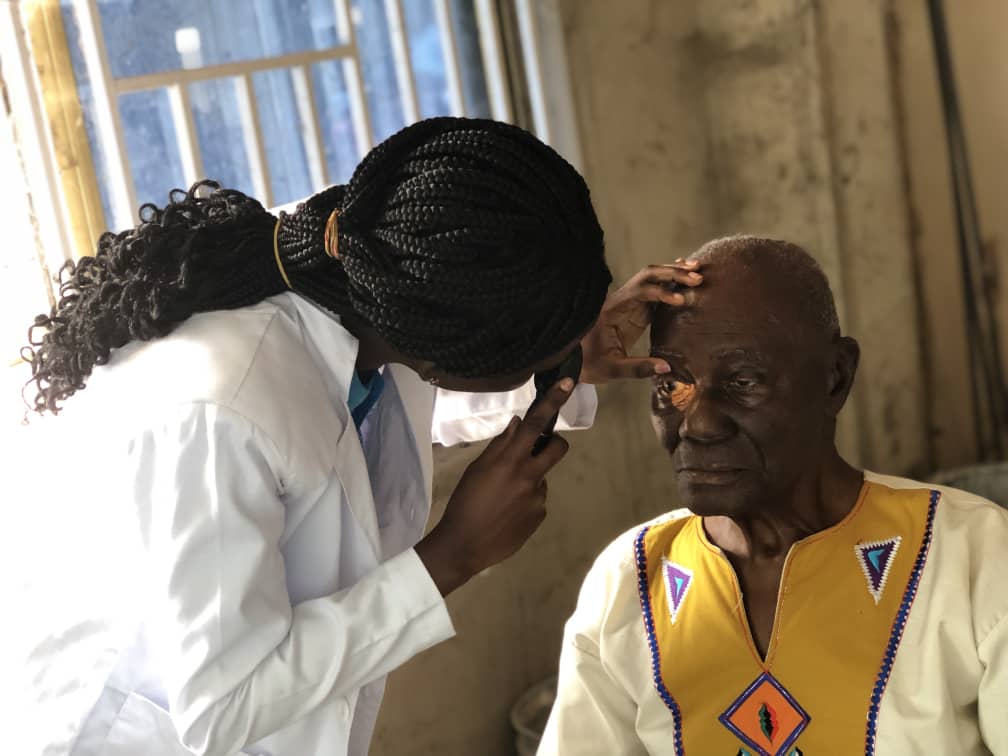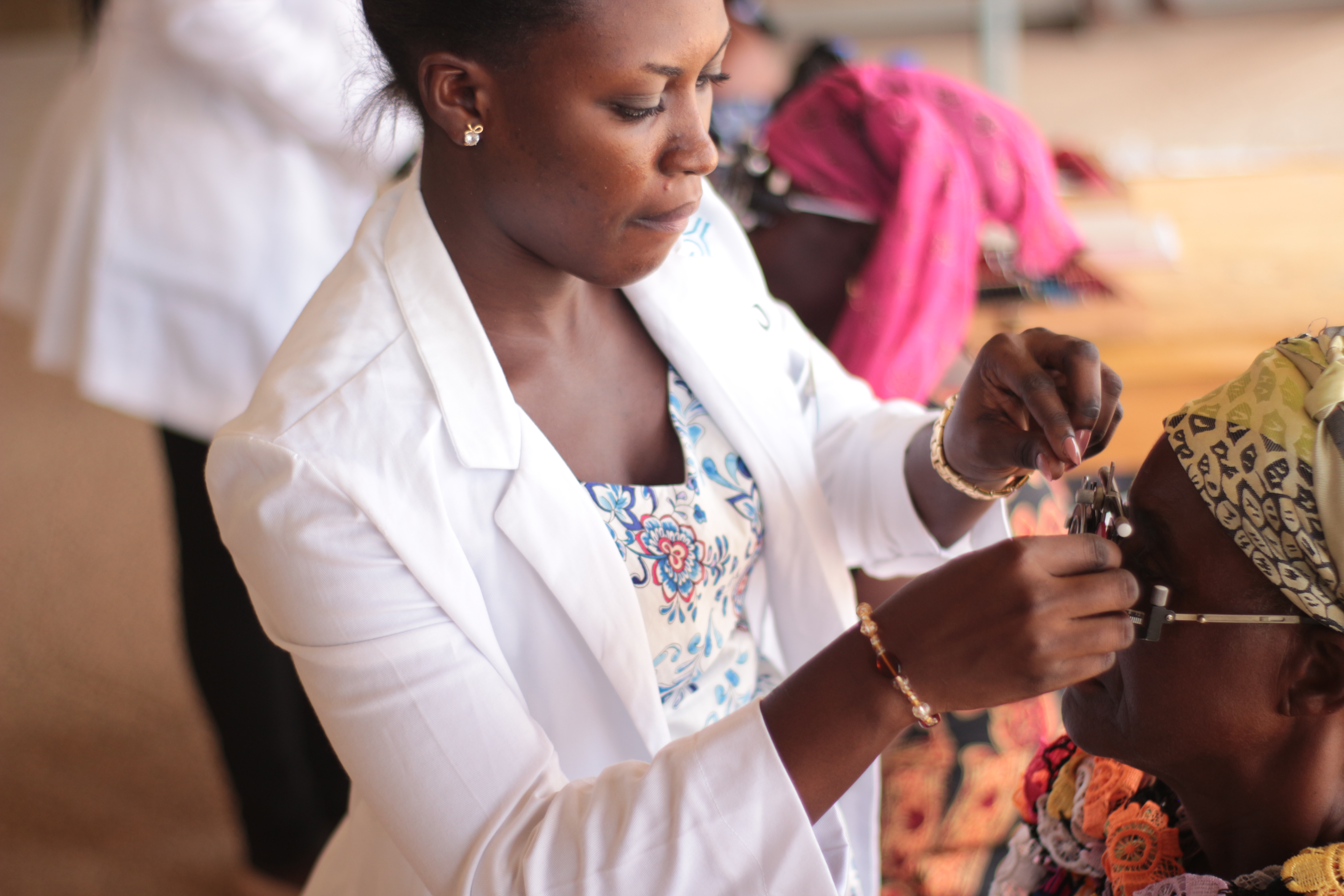Myopia Theories - Malondialdehyde and Superoxide Dismutase Potential Correlation with Myopia?
Greetings to all and sundry,
I do hope we are all doing well and staying safe. It's been a while and I must certainly apologize owing to the fact that work hasn't really been easy with me as I am still adjusting to my new role as a research and teaching as within the Department of Optometry and Visual Science in KNUST Ghana.
Today I would like to discuss an interesting read I came across with regards to myopia theories and the possible research work I am looking forward to doing should I get the needed funding as lab work tends to be expensive and I may have to move to the department of biochemistry for help irrespective let me share my proposal with you.
Malondialdehyde
Oxidative Biomarkers have become an important factor to look at when you want to look at health-related issues and recently that has been eye researchers venturing into this part of research however with regards to the eye you may realize that there's not so much been done in this field.
In 1989, Simonelli et al whiles working on the levels of malondialdehyde in cataractous lenses came across an interesting finding which was that whiles lenses with cataracts had more malondialdehyde in them it was also realized that eyes that had high or severe myopia also had even more amounts or levels recorded as compared those that didn't.

This is an interesting finding indeed and one that warrants further look into it however i did not find much hence my curiosity to work on this as a thesis project to see what i can find.
Now we know that the eye works with light and that light also causes the production of free radicals through the photo-sensitizing process. This means that the eye would be one of the organs that may be prone to oxidative damage.
Now we know that malondialdehyde is an product of lipid peroxidation when free radicals work on polyunsaturated fats and lipid peroxidation brings about cell death. And basically when the eye is exposed to light and the photo-sensitizing process causes peroxidation we would have damage and death of cells and this could directly or indirectly be measured by measuring the malondialdehyde levels in the eye.
Superoxide Dismutase
In the case of superoxide dismutase, we would be looking at it in the opposite of that of the malondialdehyde in that whiles malondialdehyde acts as an end product of the peroxidation process this stops and disrupts the process to prevent reactive oxygen species from roaming about by catalyzing the dismutation of superoxide anions to hydrogen peroxide which is further broken into oxygen and water.
And so the theory is that if the amount of superoxide dismutase is high then oxidation or oxidative process would be low and that would be good for the eye. And that would mean that free radical damages could be down.

And so based on the earlier findings by Simonelli et al we could then be looking at individuals having high levels of these oxidative biomarkers potentially having myopia and then we could look at how the levels vary with myopia and we can further compare with control of non-myopic individuals as to whether this is just coincidental finding or there would be something significant to look at.
The Theory / Conclusion
And so the questions would be how do these biomarkers relate to the findings of myopia in an individual and how do they correlate the levels or severity of myopia.

Is there even any correlation at all and if any is it significant enough for researchers to pick it up and look for more information to combat the myopia pandemic that's is taking the world by storm? Many thanks to you for reading and greetings to my friends' prof @lemouth and my brother from Nigeria @gentleshaid. Stay safe and have a wonderful time
References
Inal, M. E., Kanbak, G., & Sunal, E. (2001). Antioxidant enzyme activities and malondialdehyde levels related to aging. Clinica chimica acta; international journal of clinical chemistry, 305(1-2), 75–80. https://doi.org/10.1016/s0009-8981(00)00422-8
Ateş, N. A., Yildirim, O., Tamer, L., Unlü, A., Ercan, B., Muşlu, N., Kanik, A., Hatungil, R., & Atik, U. (2004). Plasma catalase activity and malondialdehyde level in patients with cataract. Eye (London, England), 18(8), 785–788. https://doi.org/10.1038/sj.eye.6700718
Francisco, B. M., Salvador, M., & Amparo, N. (2015). Oxidative stress in myopia. Oxidative medicine and cellular longevity, 2015, 750637. https://doi.org/10.1155/2015/750637
Kim, E. B., Kim, H. K., Hyon, J. Y., Wee, W. R., & Shin, Y. J. (2016). Oxidative Stress Levels in Aqueous Humor from High Myopic Patients. Korean journal of ophthalmology : KJO, 30(3), 172–179. https://doi.org/10.3341/kjo.2016.30.3.172

Thanks for this interesting post, which I must admit that it was a bit hard to read for me.
For instance, I didn’t know what was a malondialdehyde or a superoxide dismutase and I had to look for it on the Internet (and then the connection this blog was more obvious). However, the differences between them are still not very clear, at least for someone like me who has no knowledge in this field. I would thus be glad if you could help me… Thanks in advance :)
Cheers!
Hello prof,
How are you doing, please? It was a pleasure to see that you read my writeup I'm grateful and sorry for it not being as lucid as it ought to have been. So let me see if I can make the general idea quite simple for you.
So basically what I was trying to do is draw our attention to the possibility of these two oxidative biomarkers thus malondialdehyde and superoxide dismutase levels in the eye or the body having any correlation with one developing myopia or having their myopia progress as the days or years go by.
And so if these two have any form of correlation with myopia then possibly scientist can look into it to find a way to combat myopia. And so what I tried to do in this writeup is to describe the mode of action for the two biomarkers in terms of their oxidative functions and how they can thus be directly or indirectly looked at to measure or predict myopia growth and development that way we could arrest myopia by counteracting them.
I am not certain if am able to shed a bit more light on to it though however please let me know if this helps in anyway
Thanks for the clarifications. I confirm that it helps a bit to understand ad it made what I got from my first reading more concrete.
Note that the only message I wanted to pass with my reply is that by adding a definition of every concept used in the post could be really helpful to your readers. For instance, here I would have re-defined what an oxidative biomarker was and then connect it with the two examples you use. In this way, laymen and laywomen will be able to better corner what is going on.
Of course, feel free to dismiss this comment if you don't like it. There is no obligation (this is however the kind of feedback I would personally be very happy to get, so that I could improve myself) ;)
Thank you prof I believe your comment is very helpful and would go a long way to improve my writing and the way I communicate my ideas to the layman or general public. I do agree with you and I am certain following this process would make things so much better for all my readers. I look forward to applying it in my subsequent ideas or writeups. Thanks and I wish you a wonderful day
You are very welcome!
Cheers!
Thanks for your contribution to the STEMsocial community. Feel free to join us on discord to get to know the rest of us!
Please consider delegating to the @stemsocial account (85% of the curation rewards are returned).
You may also include @stemsocial as a beneficiary of the rewards of this post to get a stronger support.
Congratulations @nattybongo! You have completed the following achievement on the Hive blockchain and have been rewarded with new badge(s):
Your next target is to reach 42000 upvotes.
You can view your badges on your board and compare yourself to others in the Ranking
If you no longer want to receive notifications, reply to this comment with the word
STOPCheck out the last post from @hivebuzz:
Support the HiveBuzz project. Vote for our proposal!
Wow! I never would have read this if it were not for the most recent edition of Distilled. This is actually a fascinating area of study. It always seemed that myopia was a fact of life that we all had to accept, that it was the fate of bookworms (me!) and tailors. This area of research finally brings myopia into the 21st century where we might be able to prevent or modify the progression of the condition (yes?).
Good luck in this research. Our eyesight is precious
Thank you Sir @agmoore, It is indeed an interesting and fascinating work to work on and i simply can't wait to see how things turn out.